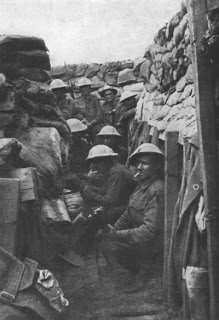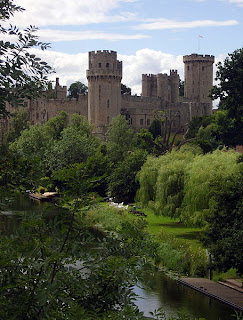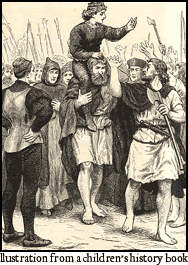First
it was King Richard III under a car park in Leicester, then King Alfred theGreat in a churchyard in Winchester, now archaeologists want to solve a two
hundred year old mystery in Germany by exhuming a corpse that some believe to
be that of Marie Thérèse Charlotte de
Bourbon, the eldest daughter of King Louis XVI and Queen
Marie-Antoinette of France. The scientists are hoping they will be able to
extract viable DNA from the remains which, once tested, will conclusively prove
whether or not she was the unfortunate French princess. It may also be possible to create a facial
reconstruction from the skull, which can be compared to contemporary portraits
of Marie Thérèse and her family to see if there is any family resemblance
between them.
 |
| Marie Antoinette with Madame Royale and the Dauphin |
The
opening of the grave is somewhat controversial, as some of the local residents
in Hildburghausen approve of the project
while others feel that the exhumation is disrespectful and that they prefer the
mystery to remain unsolved. The archaeologists have already determined that the
grave contains human remains and these have been identified as being those of a
female of roughly the same age as the Dark Countess when she died. But much more scientific testing needs to be
undertaken before they can come to any conclusions about who the lady actually
was.
During
her lifetime the enigmatic lady was known locally as the Dark Countess, a mysterious
figure who arrived at the castle of Eishausen in Thuringia in 1807 accompanied
by a man, known as the Dark Count, who never claimed to be either her husband
or her lover and introduced himself as Count Vavel de Versay. They lived under the protection of the Duke
and Duchess of Saxony and the lady’s true identity was never disclosed. She led a very reclusive life, very rarely venturing
out and when she did she was heavily veiled, dressed in black and always
travelled in a closed carriage.
Her
solitary life ended on November 28, 1837 and she was buried with undue haste,
possibly even without a religious funeral service being said at her graveside. Her name was given out by the Count as Sophie
Botta, supposedly an unmarried woman from Westphalia, although a search of the civil registries in Westphalia did not turn up any
entries for this name. The physician who
attended her passing estimated her age to be around 60 years old. She was not interred in the local cemetery,
but in a strange tomb on a mountain called the ‘Stadtberg’ outside of the town
of Hildburghausen, with no inscriptions or memorials to identify the occupant. The
Count remained at the castle until the time of his own death in 1845.
 |
| French Royal Family circa 1822 |
From the moment they moved in there was much speculation
about the mysterious couple among the local populace, who were very interested
in finding out who they really were, especially the identity of the little-seen
lady. Although there has been little
historical evidence to back it up, the most persistent theory was that the ‘Dark Countess’ was really the ill-fated Marie Thérèse Charlotte de
Bourbon, also known as Madame Royal, eldest daughter and only surviving
child of King Louis XVI and Queen Marie-Antoinette of France, who had both been
executed in Paris during the French Revolution.
Marie Thérèse had been imprisoned in the Temple for most of the
Revolution not being exchanged for a French prisoner until 1795. The theory was that the young French princess
had been so traumatised by what she had gone through, and had maybe even been
raped and made pregnant while in prison, that she could no longer face the
rigours of the outside world.
Marie
Thérèse had been born in 1778 and was the first child and eldest daughter of
the French King and Queen; a much longed for child as they had already been
married for seven years when she arrived into the world. She was known as Madame Royale from the moment
she was born and was later joined in the royal nursery by two brothers and a
younger sister. Tragically, her eldest brother the Dauphin and her sister both
died very young before the Revolution which started in 1789. She was the only one of her family to survive
the Terror, although she was not told that her parents had been executed or
what happened to her remaining brother for many months. She was held prisoner in the Temple for over
three years and was only exchanged for a prisoner, Nicolas Marie Quinette, on
the eve of her seventeenth birthday. On leaving the prison, she was taken to
Vienna, the home of her mother’s imperial family the Hapsburgs.
She
then went to live with her uncle the Comte de Provence who was residing as a
guest of the Russian Tsar in Latvia. He had
assumed the title King Louis XVIII of France after the death of her
brother. He arranged a marriage for her
with her cousin Louis-Antoine, Duc d'Angoulême, who was
the son of the new king’s brother the Comte d’Artois. The whole family moved to England in 1809,
residing at Hartwell House in Buckinghamshire.
After the fall of Napoleon in 1814, they returned to France and Louis XVIII took the throne. Marie Thérèse and her husband had no children
of their own and they were forced to leave France again in 1830, first going to
Edinburgh and then moving on to Prague.
They then moved to Gorizia, which was then in Austria, where her husband
died in 1844. She spent her final days
living quietly in a castle just outside of Vienna, where she passed away on 19th
October 1851.
It was rumoured
she had exchanged identities with her half-sister Ernestine Lambriquet, and it
was this half-sister who actually married the Duc d’Angoulême
in 1799. Ernestine Lambriquet was allegedly the illegitimate
daughter of Louis XVI and a chamber maid called Philippine Lambriquet. However,
there are records in France for the marriage of Ernestine Lambriquet in 1810 to
a man called Jean-Charles-Germain Prempain and records of her death aged
35 in 1813, which would seem to indicate that there had not been any
switch. However, many remarked on how
much the appearance of Madame Royale had changed in portraits from the ones
painted before 1795 and that her manners and behaviour had also considerably
altered. In more recent years,
handwriting comparisons have also been undertaken between Marie Thérèse’s early
correspondence and her later letters that seem to show that they could not have
been written by the same person. The
shadowy Dark Count was proved to be one Leonardus Cornelius van der Valck, a Dutchman who
served in the French Embassy in Paris from July 1798 and April 1799. This is in itself another mystery, because
why would a foreign diplomat working with the new regime in France give up his
life to protect and be a companion to a dispossessed French princess?
So who was the Dark Countess? Was she really Marie Thérèse Charlotte de Bourbon, driven into a life of solitude by the tragic memories of what happened to her family during the Terror and her own horrific experiences while imprisoned? Or was she just a woman who liked to live a quiet life, a woman who maybe suffered from a facial injury or social phobia that caused her to avoid mixing with strangers? Hopefully the scientific analysis of the body will yield answers and her identity will be confirmed. But if the Dark Countess is not the French princess, who was she and why did some of Europe’s most senior royals give her shelter and help her to live in comfortable isolation, away from the world?
Marie Antoinette with Madame Royale and the Dauphin image Wikimedia Commons Public Domain
The French Royal Family circa 1822 Wikimedia Commons Public Domain



_Milit.Cem.JPG)








